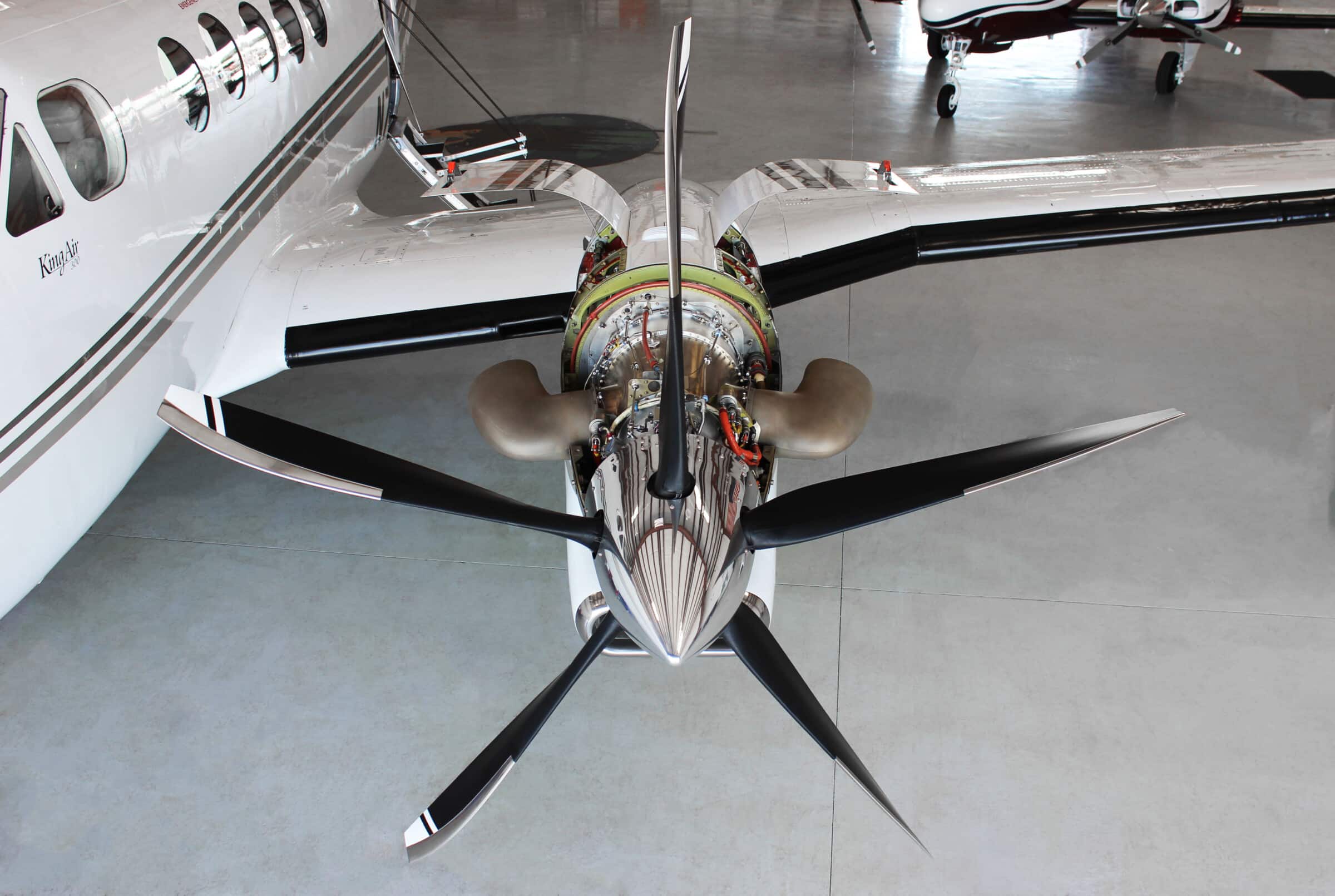
At Blackhawk Aerospace, safety and peak performance are our top priorities. This commitment extends beyond takeoff and flight – it starts right on the ground. Ground performance analysis can play a vital role in ensuring your aircraft engine operates efficiently, within safe parameters, and should be a consistent aspect of every aircraft’s maintenance program.
The ability of your engine to generate sufficient power for takeoff is crucial for airworthiness. The PT6A maintenance manual confirms this: as long as the engine delivers the takeoff power mandated by the flight manual for the prevailing conditions (temperature and pressure altitude), it meets the airworthiness requirement. Most aircraft flight manuals have a table in the performance section titled Minimum Take-off Power (or something similar) which speaks to this airworthiness standard.
Understanding Hot Section Inspections (HSI) and Engine Monitoring
During anticipated high-temperature or high-altitude operations, engine parameters like Inter-Turbine Temperature (ITT) and Gas Generator Speed (Ng) might approach or exceed their maximum limits. In such scenarios, the maintenance manual might recommend an HSI before encountering these extremes.
However, troubleshooting the engine and its installation is crucial before resorting to an HSI. This proactive approach can identify and address potential issues, preventing unnecessary inspections and associated costs. Interpreting engine trends from consecutive ground performance results over the life of an engine is a very effective tool in this evaluation. These trends are derived from the differences calculated between the engine run target values and the actual observed values.
Ground Performance Data: A Wealth of Information
Ground performance records offer historical information about your engine’s health. By analyzing these records, we can identify potential or developing engine problems early on. However, the benefits of ground performance data extend far beyond just engine health. Here’s how this valuable information can be used:
- Engine Trend Monitoring: Ground performance records allow for the collection and analysis of engine data to detect deterioration, accelerated wear, and other damage. By tracking the operational parameters of the engine and correcting for atmospheric conditions, it is possible to monitor and trend the health and stability of your aircraft engine. Early detection allows for corrective measures, preventing costly repairs down the road.
- Performance Evaluation: Ground performance data is used to assess engine health before and after significant maintenance procedures like HSIs or major repairs. This evaluation ensures the engine is performing optimally post-maintenance.
- Troubleshooting Tool: Ground performance data goes beyond engine health. It can be a powerful tool for identifying airframe-related issues such as excessive bleed air or accessory power extraction, engine air leaks, malfunctions in anti-icing systems, or problems with Inertial Particle Separators (IPS).
In addition to these applications, Pratt & Whitney’s blog post “Ground Performance Checks for Your PT6A” explores the technical aspects of these checks, providing a deeper understanding of the data collected.
Ground Performance Data: Accuracy Matters
Ground performance data is collected during engine run-ups as outlined in the Aircraft Maintenance Manual (AMM). This data may be recorded by hand reading from the engine instruments, digital data recorders, or through software integrated with engine diagnostic tools. [For specific details on the equipment used with your aircraft model, please consult your AMM]
The quality of ground performance data hinges on several critical factors:
- Accurate Instruments: Utilizing precise instruments to measure crucial engine parameters to include Indicated Outside Air Temperature (IOAT) and Pressure Altitude (PA) is essential.
- Proper Aircraft Configuration: The aircraft needs to be configured accurately for the engine run-up, considering factors like engine anti-ice, generator status, air conditioning settings, bleed air usage, and wind conditions.
- Correct Charts and Calculations: Using the appropriate performance charts specific to your engine and airframe combination, along with precise target calculations, ensures a reliable baseline for comparison.
- Data Collection and Analysis: During the engine run-up, it’s crucial to stabilize the engine as close to the target torque as possible. Subsequently, all operational parameters should be precisely recorded. Deviations between target readings and actual readings are what matter most for trend analysis.
Ground performance analysis is a cornerstone of proactive maintenance practices at Blackhawk Aerospace and should be a consistent aspect of every aircraft’s maintenance program. By meticulously collecting and interpreting ground performance data, we can ensure your aircraft engine operates at peak efficiency, identify potential problems early on, and facilitate a safe and smooth flight experience for every journey.
For any further questions or to schedule a detailed ground performance analysis for your aircraft, please don’t hesitate to contact us.



